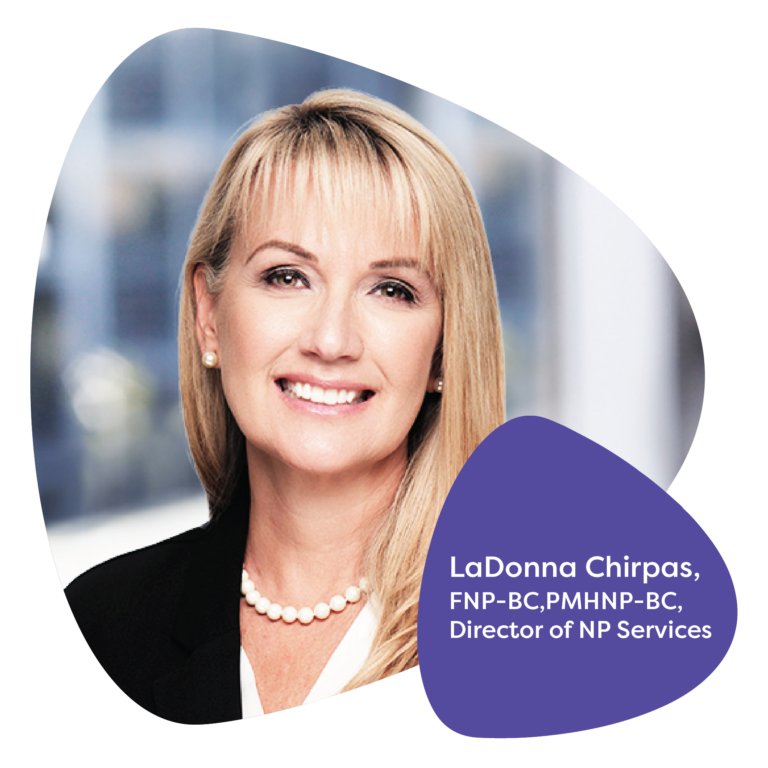Today, many traditional care models remain siloed and fall short of whole-person-centered care that addresses both behavioral and physical health conditions – and how they impact each other. Emerging healthcare models, including virtual care and the expansion of digital health tools, seek to integrate value, quality, and access while keeping the patient journey and experience top-of-mind.
In this piece, I’ll share insights on why Behavioral Health Integration (BHI) is central to patient and provider satisfaction, the potential challenges and benefits of this approach, and what BHI looks like in practice.
The role of behavioral health in primary care
Behavioral health factors have a strong influence on patient morbidity and mortality.
In fact, according to the American Academy of Family Physicians, as many as 75% of primary care visits include mental or behavioral health components. And, 67% of adults with a behavioral health condition do not receive appropriate treatment.
In the face of nationwide psychiatrist shortages, primary care providers (PCPs) are often positioned as the first-line of behavioral health care for their patients. However, while PCPs often want to know more about behavioral health and how to care for their patients, they don’t always have the time or specialization to treat more complex cases.
That’s because treating a behavioral health condition doesn’t always have a clear or obvious path for medication and treatment. However, by leveraging a virtual behavioral health solution, PCPs can ensure their patients are getting the help they need and healthcare organizations can ensure financially sustainable delivery of behavioral health services.
The financial benefits of Behavioral Health Integration
According to a Briefing Series on the Role of Psychology in Health Care by the American Psychological Association, the interconnection of behavioral health and physical health can have a profound impact on total cost of care:
- Behavioral health conditions like anxiety and depression can worsen chronic conditions like cardiovascular disease, asthma, diabetes, and cancer.
- Research shows treatment of behavioral health conditions in primary care settings offset costs by 20-40%.
- Research also shows fewer hospitalizations that result in significant cost reductions for patients with comorbidities and improvement in treatment adherence, translating to $105 billion in annual avoidable health care costs.
To add to these numbers, in a behavioral health analysis by Evernorth Health Services, treating behavioral health conditions in outpatient care is directly tied with a reduction in medical and pharmacy costs — with savings up to $2,565 per person over 15 months following a diagnosis and up to $3,321 per person over 27 months following a diagnosis.
These numbers show us that primary care providers shouldn’t face the burden of providing behavioral health services alone. And they don’t have to. With the help of a behavioral health specialist, their organizations can generate savings and their patients can experience superior outcomes.
Challenges and solutions organizations may face when implementing collaborative care
While behavioral health integration delivers clear benefits for your patients, care team, and PCPs, achieving it isn’t without its challenges. Some of the most common challenges we’ve heard from healthcare organizations include:
- Long wait times for behavioral health providers: Providing timely access to care for mid-to-high acuity behavioral health conditions can be challenging. For example, if a patient needs medication management from a psychiatrist, wait times can often be too long. However, if a provider is integrated into a practice, seeing a SUD therapist, for example, may be quicker.
- Greater level of assessment required: While PCPs take on the majority of behavioral health patients, sometimes the level of assessment is greater than what they can provide. While there’s no easy button, integrated care, even at a small level, can get the ball rolling.
- Relying entirely on in-person care: In-person care is still the gold standard of care. However, by trying to rely on in-person care models alone, it can be challenging to get the right resources, at the right time, in a financially scalable way. Many organizations face insurmountable challenges recruiting onsite providers for some of their rural and urban settings. Virtual care transcends city, county, and state barriers, so patients have access to care regardless of location.
- Triage and care navigation challenges: These approaches can be a challenge and lead to too much responsibility for the primary care provider. Primary care providers need help from the right behavioral health specialists for their most complex patients, and they need it in a timely manner. Partnering with virtual care providers in the navigation process can take additional burdens off patients and PCPs.
How Bridge Care Services Enables Behavioral Health Integration
For health systems looking to implement integrated behavioral health services, Bridge Care Services ensures the patients who need care first get care first – while being efficiently directed to an appropriate care plan.
Bridge Care Services leverages virtual care and an evidence-based care model to ensure patients that need escalation from primary care receive timely access to high-quality behavioral care, including therapy, medication management, or both.
This approach fills gaps in ambulatory and post-acute behavioral health care for patients, helping health systems achieve measurement-based outcomes and optimizing reimbursement for a financially sustainable behavioral health program.
With Bridge Care Services, the pathway begins with a billable biopsychosocial needs assessment delivered by a licensed therapy provider within seven days of a patient’s discharge. The provider then determines the appropriate behavioral health specialist to manage the patient’s care needs with counseling, medication management, or both.
The care navigation and therapeutic support from this approach alleviate the burden on the health system’s resources using a cost-effective process that closes referrals to specialists sooner and returns patients to community providers when available.
Behavioral Health Integration at Iris Telehealth
The demand for virtual behavioral health services will continue to grow, fueled by patient needs, psychiatrist shortages, and the emphasis on integrated care.
Providers who embrace these services will not only improve the timeliness of the behavioral health care they deliver, the health of their patients, and their own work satisfaction, but will also ensure their viability in a new world of consumer-centric healthcare.
If you’d like to learn more about Iris Telehealth and how can help your health care organization implement Behavioral Health Integration into your practice, feel free to reach out today.


